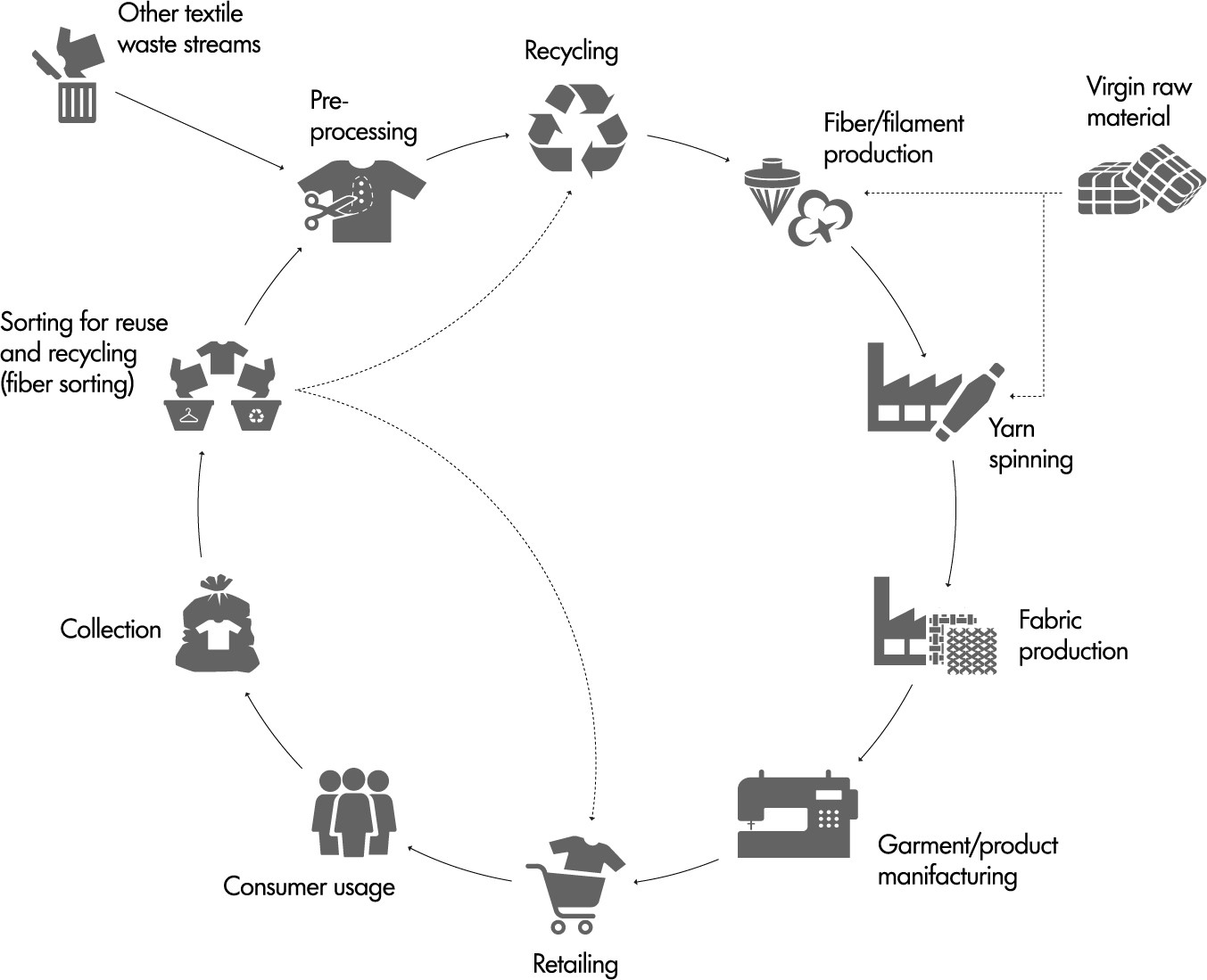
Uster’s expanded services underlined in Singapore
Adressing uncertainty for yarn spinners.

27th November 2023
Innovation in Textiles
|
Uster, Switzerland
In its just published Sustainability Bulletin No. 1, Uster Technologies outlines the required definitions, standards and specific industry knowledge necessary to support the use of recycled materials along the entire textile value chain.
Many consumers today already expect recycled materials to be used in the clothing and home textiles they purchase and this is clearly pushing innovation throughout the industry. However, there is a degree of uncertainty about what this means for yarn producers, both economically and technically.
“The use of mechanically recycled fibres in spinning has specific quality considerations,” says Gabriela Peters, head of product management laboratory systems at Uster Technologies and one of the bulletin’s authors. “Such fibres have a higher short-fibre and nep content and may often be coloured, particularly if post-consumer material is used.”
Recycled yarns also have limitations in terms of fineness, but thermo-mechanically and chemically recycled fibres and filaments can present fewer processing challenges with similar behaviour to new synthetic and viscose fibres and filaments.
The Uster Sustainability Bulletin is focused on the more problematic mechanically recycled materials.
Studies have shown that yarns and fabrics produced from recycled fibres may be better for applications where the strength of yarns and fabric is less critical, but where the control of unevenness, imperfections and handle properties is still required. Consequently, recycled fibres are most suitable for manufacturing casual clothes such as t-shirts, sweatshirts and sleepwear. In China, many tons of denim jeans are already made from mechanically recycled fibres.

As a long-term trusted supplier of quality control systems to the textile manufacturing industry, Uster assists by evaluating test results. This helps to guide spinners on the current possibilities for dealing with recycled material in its many forms.
The Uster Statistics benchmarks are also helpful in measuring, controlling and improving quality. The new edition, launched at ITMA 2023, includes a section for recycled yarns for the first time. The Uster Statistics 2023 edition also features an extended range of fibre data.
“An ideal fibre mix – with or without recycled content – must also meet quality requirements for minimal waste,” says Peters.
Uster’s Sustainability Bulletin No. 1 can be downloaded here.

Business intelligence for the fibre, textiles and apparel industries: technologies, innovations, markets, investments, trade policy, sourcing, strategy...
Find out more